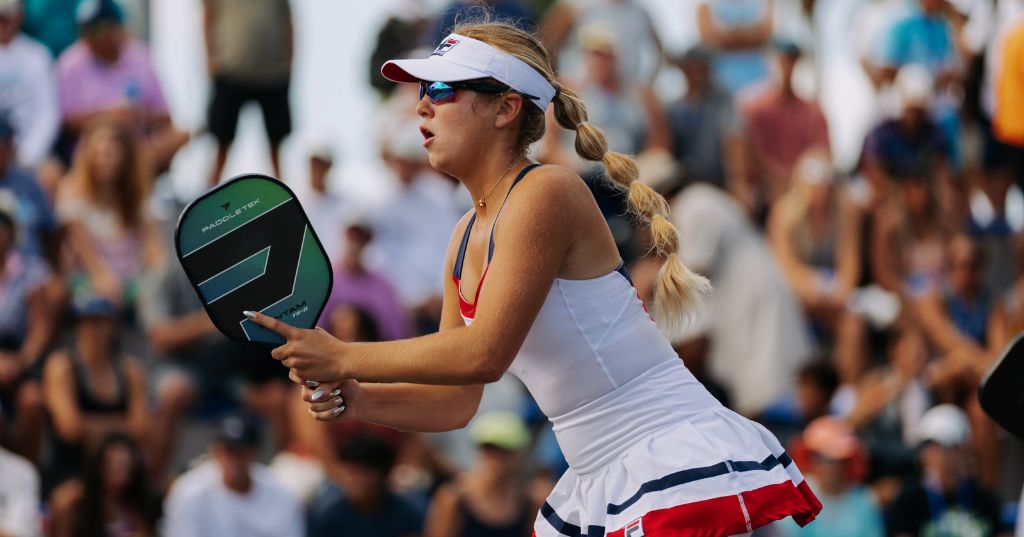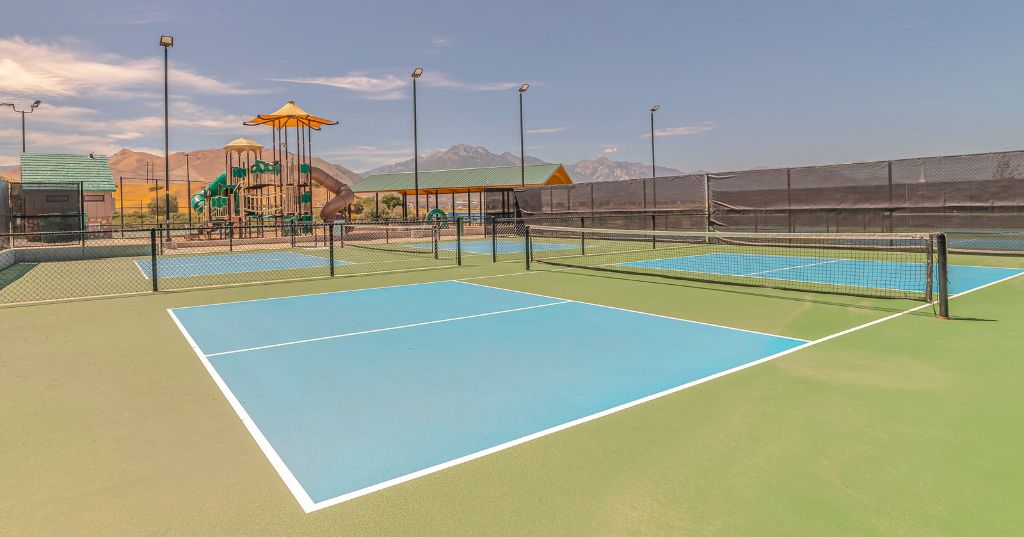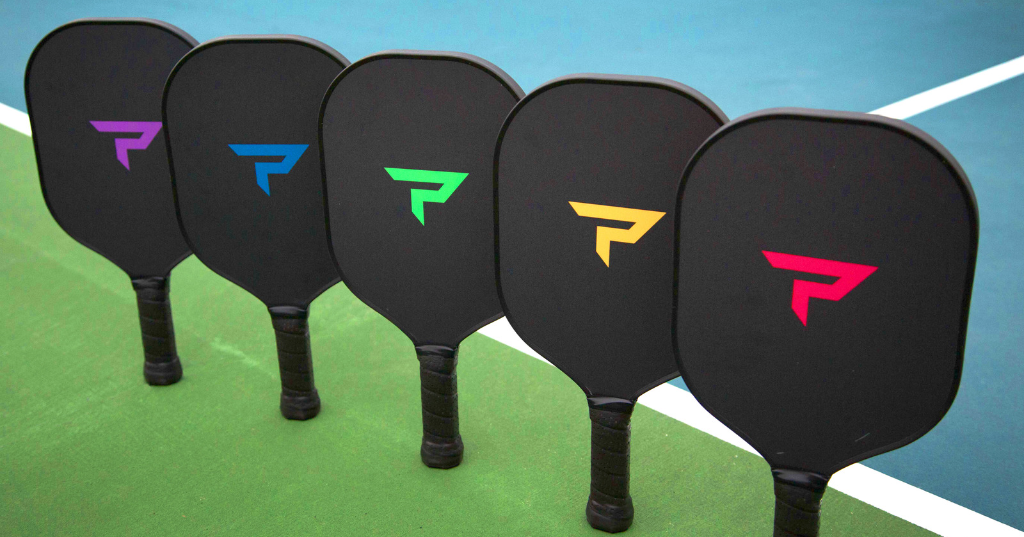Pickleball is the fastest-growing sport in the nation. It’s great for people of all ages and athletic abilities. With such a variety of players flooding into tournaments, it makes sense that pickleball comes with different skill levels. But not all players understand what differentiates each rating - leaving many with the basic question, what are the skill levels in pickleball?
Pickleball players are rated on a skill scale from 1.0 to 5.5 under USA Pickleball standards. The lower the number, the less experience a player has. Players between 1.0 and 2.5 are just starting, while 3.0 to 4.0 players can recognize an opponent’s weakness. Players 5.0+ are considered experts.
In this quick guide, we give you just enough detail to understand the different pickleball skill levels, and a few ways to accurately self-rate your abilities. To learn all this, and more, continue reading below!
What Skill Levels Does Pickleball Have?
Just like other sports, pickleball players are rated on a skill scale. It has more bearing in competitive play for amateurs and pros alike, but recreational picklers and many beginners share an interest in skill levels as well.
USA Pickleball's skill scale rates players on a scale of 1.0 to 5.5, where 5.5 is professional playing ability. USAP's 2-digit scale includes 4-digit ratings from UTPR; player ratings system for sanctioned tournaments. Other scales exist, such as DUPR, which is a 3-digit scale that goes up to 8.00.
There's also a system for self-rating organized by USA Pickleball using its skill levels. It lacks accuracy since a player can rate themselves, but it is the most accessible way to rate abilities to a pickleball skill level.
While USA Pickleball's self-rating scale is perhaps the most ubiquitous, some consider DUPR to be the best system since it uses a dynamic system, accounting for more variables with ordinal ratings, and it includes tournaments as well as recreational play.
If you want all the ins and outs of skill levels and how to find your player rating, check out Paddletek's 3 step guide to getting pickleball ratings right. But if you're here for the abridged version of skill levels in the sport, carry on.
Pickleball Skill Ratings
Below, we've adapted USA Pickleball's player skill rating definitions into an easy-to-read format that quickly summarizes the differences a player can expect from the rating progression.
Level 1.0 – Beginner
Player is learning to hold a paddle and has minimal knowledge of the game.
Level 1.5 – Beginner
Player has taken at least one lesson or is learning how to serve effectively. They have a minimal understanding of scoring.
Level 2.0 – Beginner
Player moves comfortably across the court. They can complete successful serves often.
Level 2.5 – Beginning Novice
Player effectively uses the two-bounce rule and catches on to patterns of pickleball gameplay.
Level 3.0 – Novice
Player is beginning to perfect their serve. They understand the different personalities of gameplay.
Level 3.5 – Intermediate
Player can effectively use their own serving strategies and maintain short rallies. They demonstrate how to serve deep.
Level 4.0 – Intermediate Advanced
Player maintains long rallies and effectively uses deep serving strategies and third shots. They’re confident in their abilities and have fewer fouls.
Level 4.5 – Advanced
Player uses a high level of strategy and is confident in their gameplay. They’re quick and understand how to use their opponent's weakness against them. Errors are still made.
Level 5.0+ – Advanced
Player makes nearly zero mistakes and understands the nuances of the game. This player has mastered pickleball.
Now that you know more about the pickleball skill rating system, it’s time to test your abilities and find out where you fit on the scale. Read on to figure out your player rating quickly and easily!
How Do I Self-Rate My Skill Level in Pickleball?
Self-rating will be the quickest and easiest way to figure out your skill level, but USA Pickleball does have some recommendations on how and when to go this path. USA Pickleball encourages anyone that goes this route to utilize USA Pickleball players, directors, and ambassadors in the evaluation process.
This is their unofficial way of trying to retain some level of accuracy with the rating.
From there, you have two options then. Get someone with experience and credibility to jump in and help evaluate your skill, or to be brutally honest with your skill levels and record your own rating.
Under either path, you'll end up submitting your self-rating on PickleballTournaments.com as part of a profile registration
USA Pickleball has an entire page dedicated to self-rating, where half of the content summarizes what a player's capabilities are at each level, and the other half provides downloadable worksheets that you can take to the court to presumably have a qualified observer record on your behalf.
Self-rating is all about understanding your strengths and weaknesses in the sport. To accurately rate yourself, you need to be honest and objective about your skills. For any player looking for further guidance on self-rating or how to get ratings, Paddletek's How to Figure Out Your Pickleball Rating in 3 Steps will be of tremendous value to you.
Focus on Skill, Not Skill Level
It's easy to fall into the trap of focusing on the pickleball skill level label and not the actual skills themselves. Remember that the rating system is only a framework to help you understand where your abilities are within pickleball, but it's by no means an end-all-be-all.
As long as you consistently work on improving your pickleball skills, the rating system will serve as a tool to measure your growth and development; the rest of it will fall into place.
So play in sanctioned tournaments, track your matches in DUPR, self-rate, or don't - the point is to not lose focus on playing and having fun on the court if you decide to take part in skill levels.



Leave a comment
This site is protected by hCaptcha and the hCaptcha Privacy Policy and Terms of Service apply.